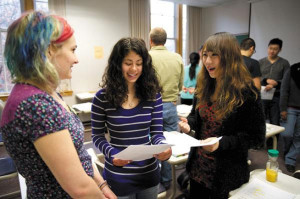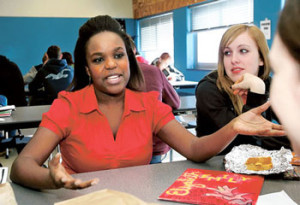Large Schools Promote Racial Self-Segregation

Large Schools Promote Racial Self-Segregation
By D.A. Barber
As the May 17 anniversary of the 1954 Brown v Board of Education school desegregation approaches, a new study of high school students shows an alarming trend where students in larger schools appear to “self-segregate.”
The study, published in the April 15 Proceedings of the National Academy of Sciences, University of Michigan sociology researchers Siwei Cheng and Yu Xie examined how the size of a social group affects a student’s preference for friends and found how school size significantly effect this self-segregation.
The results suggest that when choosing friend’s students now have more options and they are more likely to form friendships with those who have both similar interests, and racial backgrounds.
“We found that total school size had a major effect on the likelihood that students would form interracial friendships,” said Xie. “Large schools promote racial segregation and discourage interracial friendships.”

Large schools promote racial segregation and discourage interracial friendships because it is easier to find friends with the same interests and racial background. Photo Credit: blog.syracuse.com
The study tested the broadly held assumption that people prefer to make friends with others of the same race after factoring in other personal preferences that affect friendship formation, such as “age, education, hobbies, personality, religious affiliation, and political beliefs.”
All things being equal, the researchers found that when the size of their social group is small in school, students have a lower likelihood of finding a same-race friend that matches their other interest preferences. But as the size of the social group increases, students usually find same-race friends who also share their interests.
As the digital age becomes increasingly inclusive and more students own Smartphone’s, the researchers have concerns.
“One potential negative social consequence of the Internet as a social interaction medium in an ever more globalized world is to encourage social isolation and social segmentation by expanding group size immensely,” Cheng said.
Featured Photo Credit: athensnews.com
